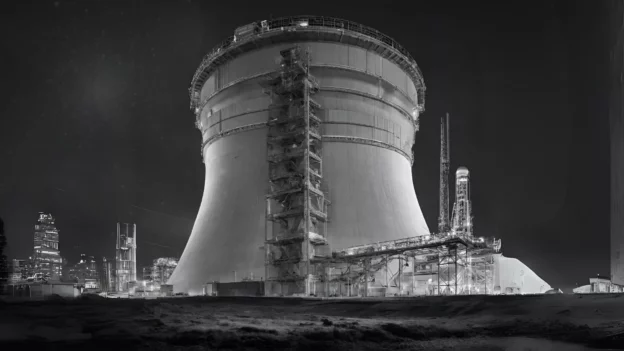Russia’s space agency, Roscosmos, together with the collaboration of China, is considering the possibility of erecting a nuclear power plant on the Moon between 2033 and 2035. This ambitious project is a step towards lunar colonization, with the goal of establishing permanent human settlements on the satellite.
Nuclear power plant on the Moon for future operations
Additionally, Yury Borisov, head of Roscosmos, shared details about this initiative at a press conference on March 5. Cooperation with China is key in the effort to install a nuclear power plant on the Moon, an energy solution considered vital to sustain life and future operations on the Moon, as solar panels alone would not be sufficient. This project includes the development of heavy-lift spacecraft and lunar bases The project includes the development of heavy-lift spacecraft and lunar bases, in a clear sign of Moscow and Beijing’s intentions to advance joint space exploration.
Borisov, who also served as Russia’s Deputy Defense Minister, emphasized Russia’s expertise in nuclear technology as a crucial contribution to the joint lunar program. Although almost all technical challenges related to the project have been resolved, one significant issue still remains: the cooling of the nuclear reactor intended to be installed on the Moon.
Other purposes
Beyond the construction of the nuclear power plant, Russia is looking to the Moon with the intention of starting mining operations. However, the Russian space program has faced several setbacks in recent years, including the failure of the Luna-25 mission, which failed to land on the lunar south pole in August 2023, marking the first Russian lunar mission in nearly half a century. In spite of these setbacks, the success of the mission Chandrayaan-3 mission, which did manage to land at the South Pole, demonstrates the growing international interest in lunar exploration.
This joint project between Russia and China not only symbolizes a milestone in international cooperation in space exploration, but also raises questions about the governance and use of extraterrestrial resources. The creation of a nuclear power plant on the Moon could set precedents for future international regulations on the exploitation of resources on celestial bodies, highlighting the need for a legal framework that balances technological innovation with the protection and sustainability of outer space.
Don’t miss any of our posts and follow us on social media!
Inspenet.com YouTube LinkedIn Facebook Instagram
Source: as.com
Photo: generated with AI


